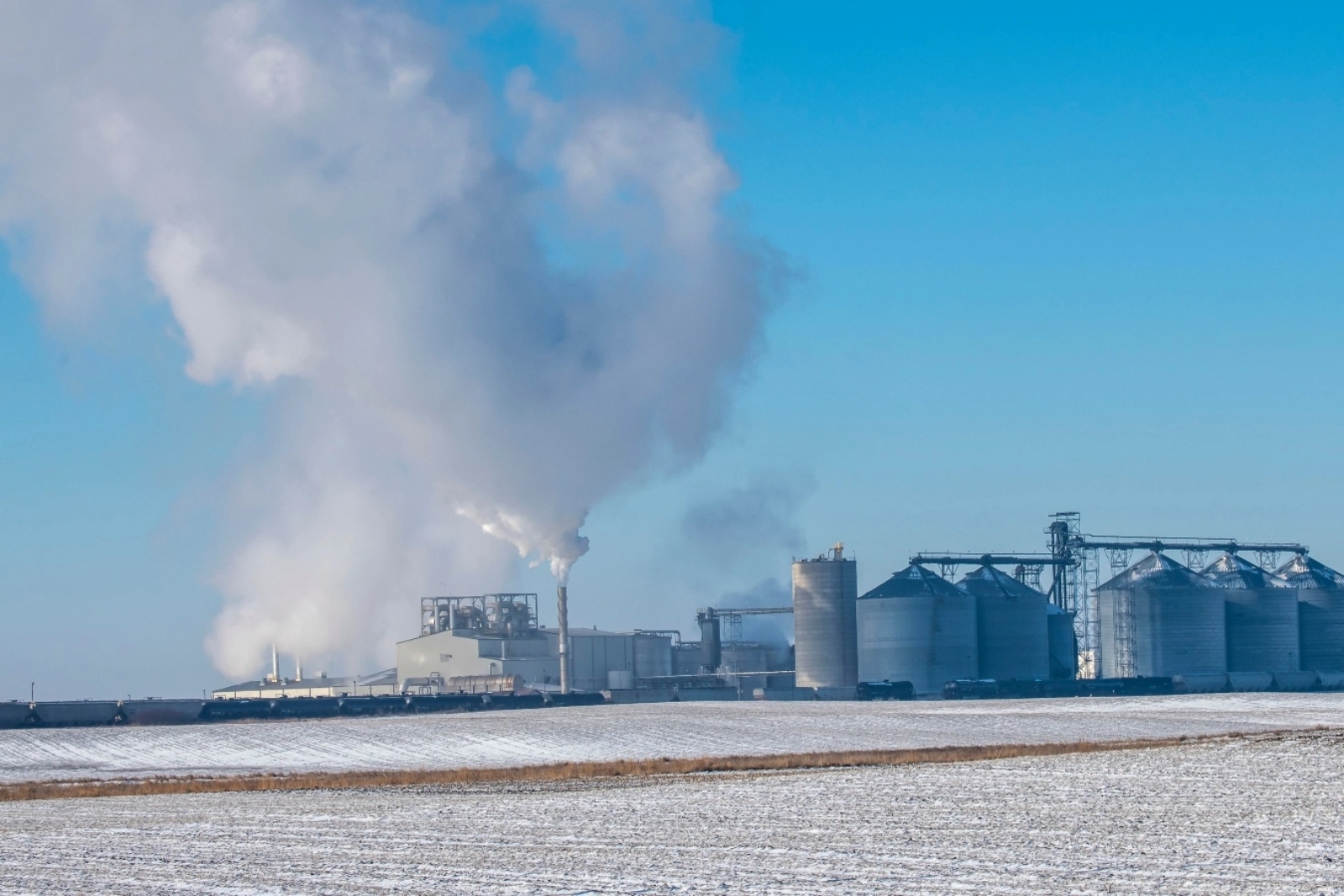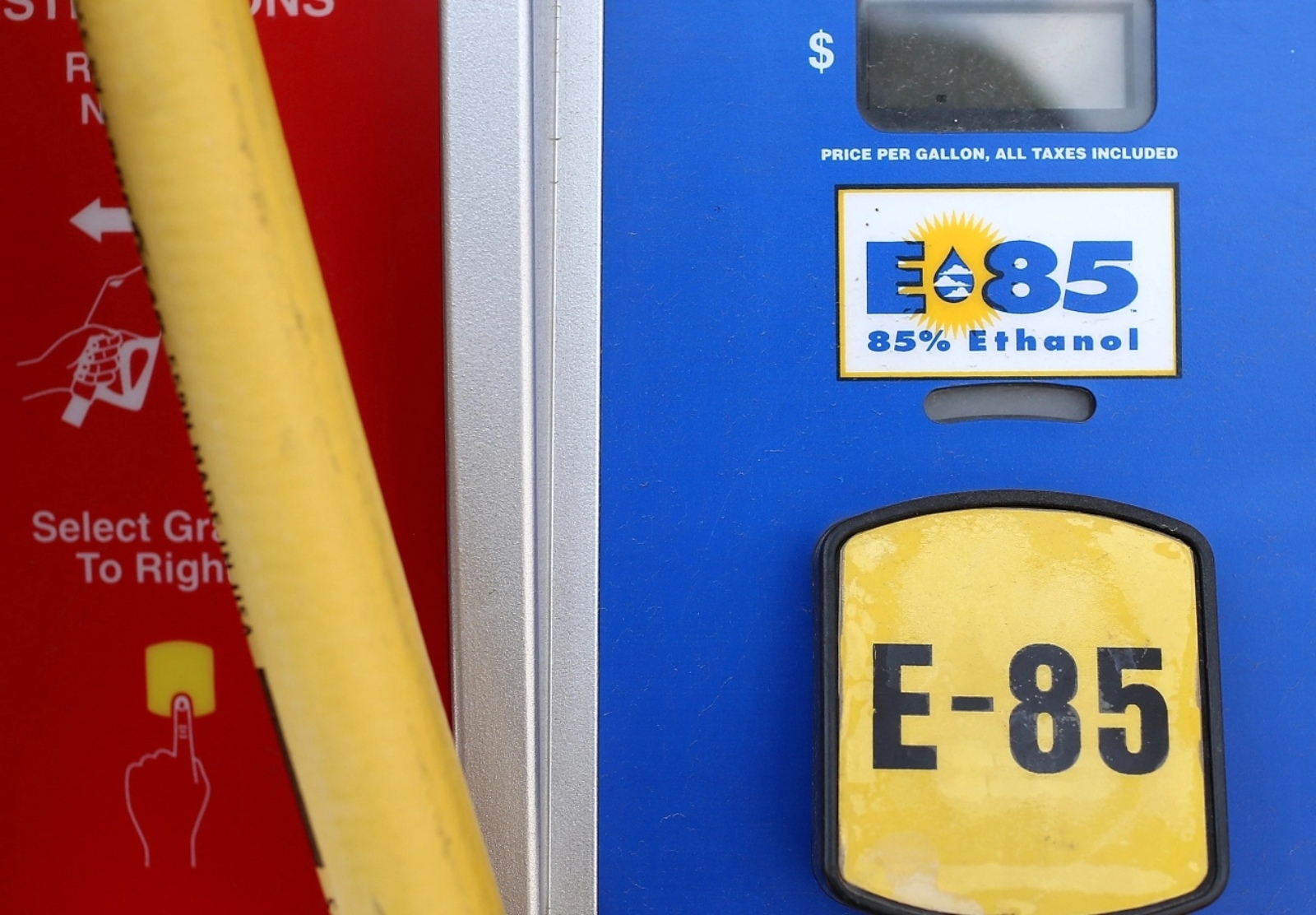Despite concern over increased air pollution, greenhouse gas emissions, and the potential to harm endangered species, a bipartisan group of Midwest governors and fuel industry leaders are pushing the federal government to approve increased ethanol sales this summer.
Ethanol, a renewable fuel made out of corn, is not normally available in the summer months as it is linked to increased levels of smog. The strain of ethanol known as E15, which means it is at most 15 percent ethanol and 85 percent gasoline, can not be sold in the summertime, specifically from June 1 to September 15.
The fuel releases more pollutants in warmer, more humid conditions and its production and discharge from vehicles are linked to an effect known as “summertime smog,” due to its chemical makeup.
Generally, states have had to request one-time waivers to sell E15 in the summer months. Just this last year, many states were granted a waiver to sell E15 in the summertime to help shore up increased costs in the fuel sector caused by Russia’s invasion of Ukraine.
With the summer driving season around the corner, Midwestern governors have been advocating for a permanent reversal of the limits on summertime sales, which are set by the Environmental Protection Agency. If reversed, the states would be able to sell E15 year-round without the need for a waiver in the future.
The EPA released its decision in early March and decided to allow the petitioning states — Iowa, Illinois, Minnesota, Missouri, Nebraska, Ohio, South Dakota, and Wisconsin — to sell E15 fuel year-round.
But this wouldn’t start until next year, a detail that has some states ready to take the EPA to court.
“At best, this delay is arbitrary and capricious. At worst, it is plainly unlawful,” Iowa Attorney General Brenna Bird and Nebraska Attorney General Mike Hilgers wrote in a letter to the EPA that urged the agency to enact this new rule by the end of April of this year. Otherwise, the duo wrote, Iowa and Nebraska plan to sue the federal agency over the delay.
In addition to state governors, industry groups have taken their demands for a waiver to the White House directly, citing the ongoing Russian invasion as well as an “increasing uncertainty in the domestic fuel supply.”
Midwest states have a direct interest in increasing the amount of ethanol drivers can buy year-round. Iowa leads the country in ethanol production, according to the Iowa Corn Association, accounting for roughly 30 percent of all the country’s production. Nebraska, Illinois, and the majority of those who petitioned the EPA follow behind in ethanol production.
Geoff Cooper, president and CEO of the Renewable Fuel Association, welcomes the EPA’s decision to increase E15 sales and commended the demand from Midwest states to have sales start this year. He said he was “quite disappointed” that the EPA delayed their decision, which put off E15 sales until the summer of 2024.
“There’s a tremendous amount of uncertainty in the marketplace right now about what is going to happen this summer,” Cooper said.
Cooper said an eventual nationwide sale of E15 ethanol is the next step to replace petroleum and other fossil fuels with “lower-carbon options.” He said the summertime ban on E15 sales is a roadblock for the Biden administration’s stated goals of net-zero emissions by 2050 or earlier.
Research from the U.S. Department of Energy and the Department of Agriculture has found that ethanol and other biofuels emit at least 40 percent less greenhouse gas emissions than their petroleum counterparts.
While the fate of this corn-based fuel and economic powerhouse remains in limbo, new research has shown that increased production could endanger protected species and the fuel isn’t as green as some claim.
Tyler Lark is a research scientist with the University of Wisconsin-Madison’s Center for Sustainability and the Global Environment. In a newly released study, Lark outlined how increased biofuel production could harm the nation’s endangered species as the need for massive acres of corn and other commodity crops has historically changed the nation’s geography and environment.
In 2021, the U.S. Court of Appeals for the District of Columbia Circuit ruled in favor of environmental groups who argued the same point. The court wrote that the EPA’s actions were “contrary to the record evidence,” and that the agency violated the Endangered Species Act when it did not consult with federal wildlife management groups ahead of setting renewable fuel standards.

The renewable fuel sector has boomed while the energy sector continues to move away from fossil fuels, with more and more expansion on the horizon. Lark said that while the shift away from fossil fuels is an immediate need, how the industries go about this shift will greatly impact land use and environmental health.
“We would expect to see farmers respond by switching crops to corn, which is a lot more intensive to grow, requires more fertilizers and generates more problems with runoff and soil erosion,” Lark said.
Lark said prairies and grasslands are being converted to acres of corn that have to be tilled and have their soil disrupted on an annual basis. The new study linked increased corn production to water pollution and threats to aquatic species by way of fertilizers and pesticides running off into rivers and streams, creating “dead zones” across the country.
The EPA is in charge of mandating how much renewable fuel, such as ethanol or biogas, is needed each year under guidance known as the Renewable Fuels Standard. This guidance aims to stabilize this fuel sector, but environmental groups have been critical of the agency’s reliance on fuel sources that are harmful to the environment and public health.
In a study released last year, Lark and other researchers found that while ethanol has been touted as a greener fuel than pure gasoline, the whole cycle of the fuel is at least 24 percent more carbon-intensive than gasoline.
“The role of corn ethanol is up in the air at this point because we know it’s not as climate friendly as we’d hoped,” Lark said.
Silvia Secchi is a researcher and professor at the University of Iowa’s Department of Geographical and Sustainability Sciences. She said she’s seen the “destruction of the state’s landscape” that ethanol has brought about, given that Iowa is the nation’s top corn-producing state, as mass production of corn to fuel the industry has led to increased soil damage and water pollution from chemical runoff.
Her research predates Lark’s and also points to a decrease in land conservation linked to increased corn commodities used for ethanol production. Secchi said the push for year-round E15 sales is not a solution to the climate crisis, but a distraction.
“Ethanol is not a substitute for gasoline; it is a complement to them,” Secchi told Grist, referencing the fact that gasoline and ethanol are blended. “The industry is essentially trying to slow down and put off the transition away from fossil fuels for as long as they can.”



